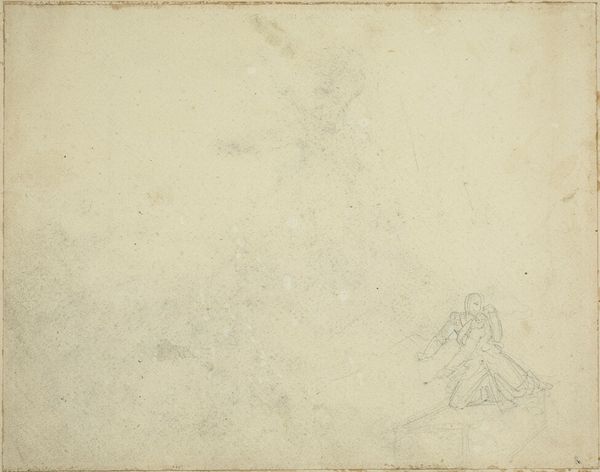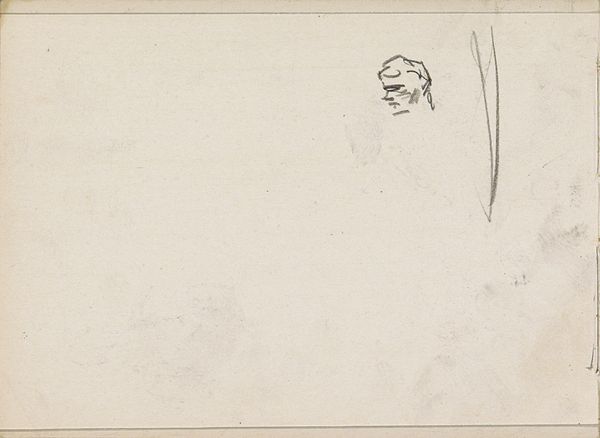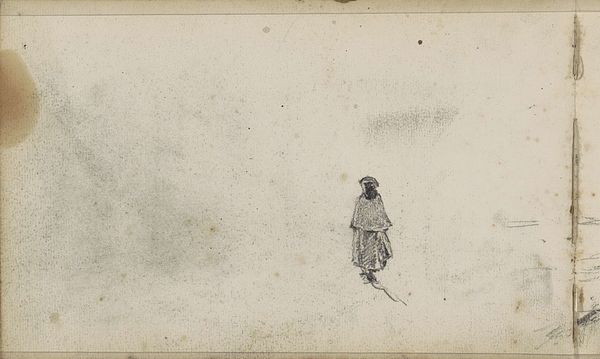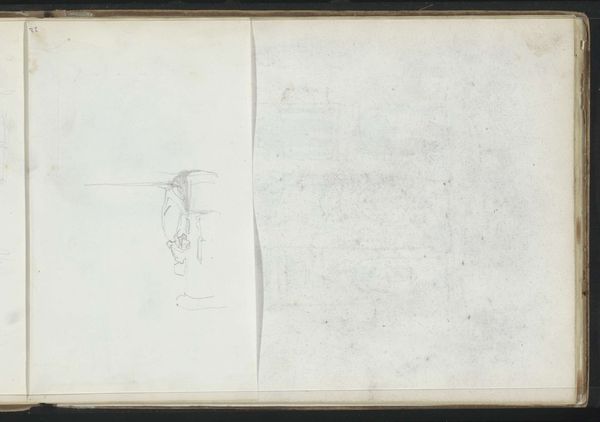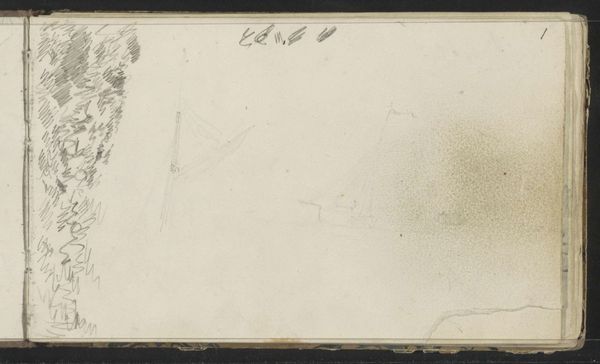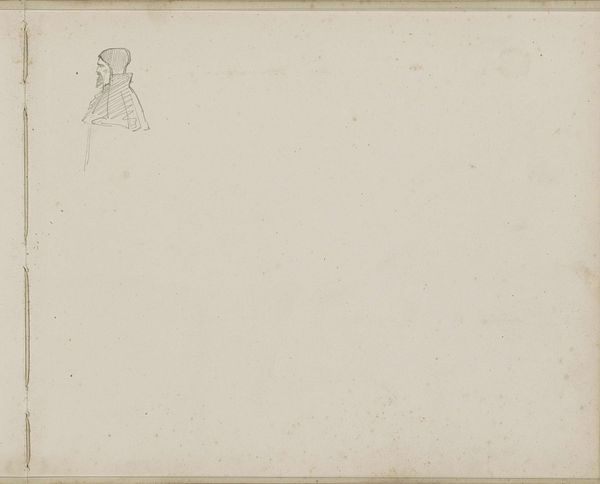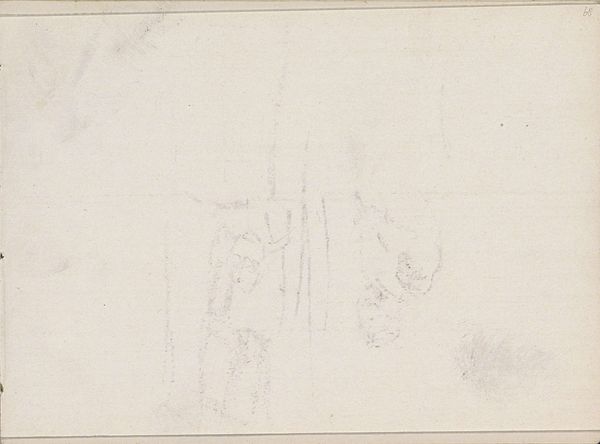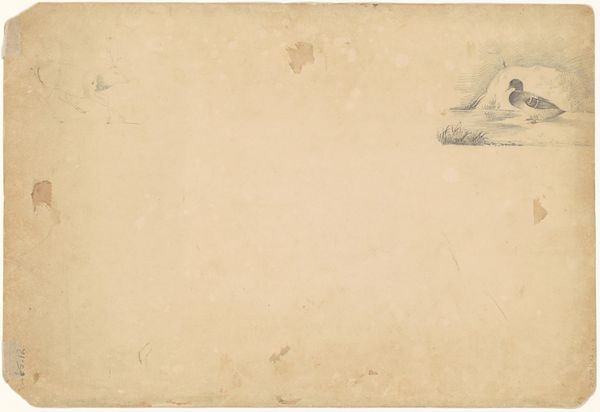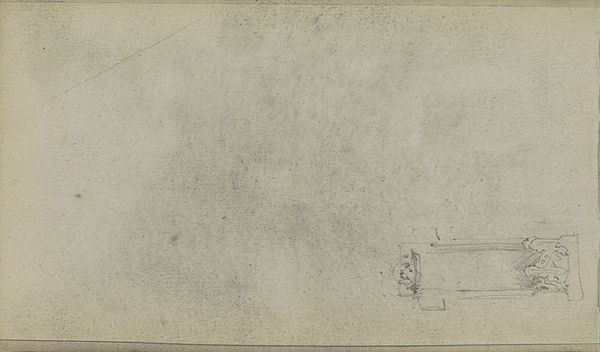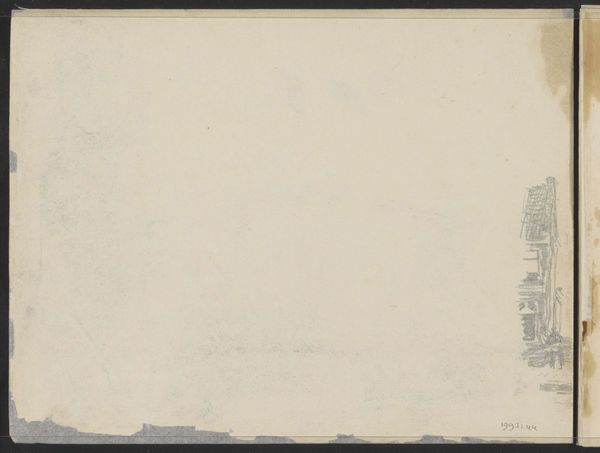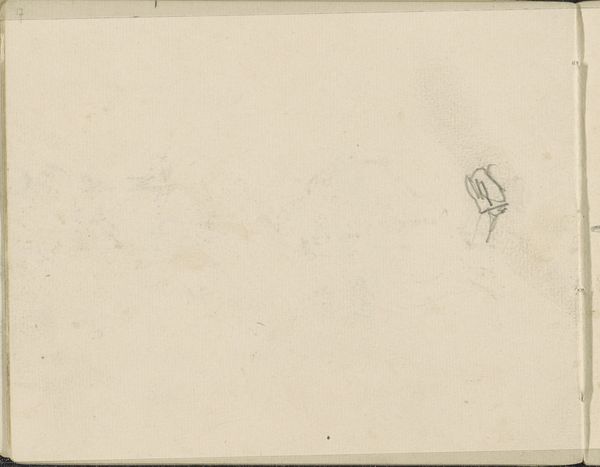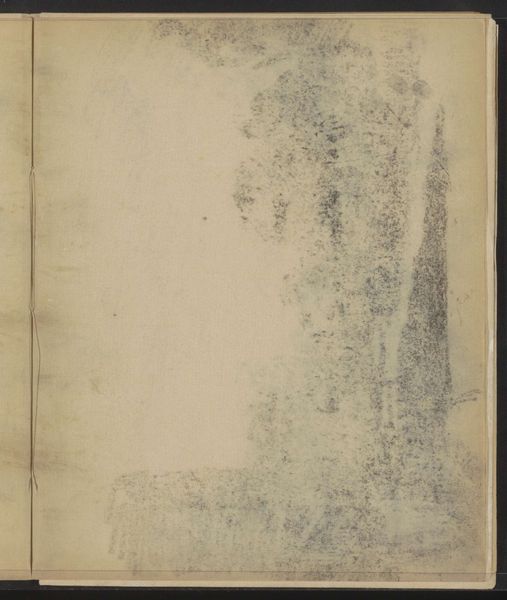
drawing, pencil
#
portrait
#
drawing
#
pencil
#
genre-painting
#
realism
Copyright: Rijks Museum: Open Domain
Curator: Willem Bastiaan Tholen created this pencil drawing, titled "Vrouw met een kap en schort, van achteren gezien," sometime between 1870 and 1931. It’s currently held at the Rijksmuseum. What’s your immediate impression? Editor: Well, immediately I'm struck by its... economy. Such delicate, sparse lines used to suggest form and presence. There's a quietness about the composition, a solitude emphasized by the blank space surrounding the figure. Curator: I agree. The restrained linework serves to distill the essence of the subject. Notice the structural balance achieved with so few strokes; the verticality of the figure grounded by the implied horizon line, subtly indicated by the change in tone toward the bottom of the paper. Editor: But I think there’s more than just structure here. Consider the social implications – a woman in modest dress, seen from behind. It speaks to the anonymous labor often performed by women, their contributions rendered invisible in a patriarchal society. Curator: An intriguing point. From a purely formal perspective, the averted gaze invites the viewer to complete the narrative, to project their own understanding of the woman's interiority. Semiotically, her dress could be seen as a signifier of her role. Editor: Precisely! Her averted presentation makes her a symbol, less of an individual and more representative of a whole class of women. One wonders about Tholen's intentions. Was he aiming to highlight their plight? Curator: Difficult to ascertain intentions with such a simple sketch. The beauty of the piece also lies in its incompleteness, the way it activates the viewer's imagination. The materiality of the pencil marks on paper, the visible texture—these all contribute to its profound effect. Editor: Agreed. I am now reflecting on its public role and presentation within the Rijksmuseum, prompting critical discussions regarding social equity and historical representation within fine art institutions. Curator: Indeed, this subtle drawing opens up layers of artistic considerations, from pure form to potent narratives. Editor: Leaving us to reconsider those seemingly quiet, invisible parts of our shared cultural heritage.
Comments
No comments
Be the first to comment and join the conversation on the ultimate creative platform.
